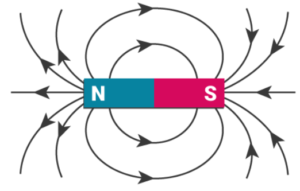Table of Contents
Permanent Magnets
These magnets can retain their magnetism and magnetic properties for a longer period of time. Permanent magnets are composed of highly magnetic hard materials. A good example of a permanent magnet is the Bar Magnet. This magnet demonstrates magnet behaviour in great detail. Permanent magnets are also referred to as bar magnets.

This section will go over the various types of permanent magnets. These are their names:
- Ceramic magnets are the least expensive permanent magnets available. They’re used in the food industry, as well as in magnetic resonance imaging and other fields.
- Magnets that are flexible are used in refrigerator door seals. They can be made from rubber polymers, plastics, and magnetic powders.
- NdFeB magnets (Neodymium Iron Boron Magnets) are rare earth magnets. It is relatively simple to oxidise. It’s an expensive substance. It’s popular in jewellery making, bookbinding, and other crafts.
- Samarium cobalt (SmCo) magnets are also rare earth magnets. It is resistant to heat and oxidation. They have a more powerful magnetic field.
The Use of Permanent Magnets
- Hard drives, motors, vehicles, generators, televisions, phones, headphones, speakers, transducers, and sensors all require permanent magnets. A magnet’s most common function is to attract other magnetic objects, but it also performs a number of functions in electrical devices.
- The majority of speakers employ a permanent magnet in conjunction with a wire coil (an electromagnet, really). The audio signal travels along the cable, moving the speaker. Sound is produced by the speaker by moving air.
- Magnetic hooks or closures are commonly found on a cabinet or furniture doors. They are typically made with a low-cost ceramic magnet sandwiched between two steel plates that attract and touch a steel “strike plate” on the door.
Solved Solutions
Question 1: Is it possible to have a single north pole and a single south pole?
Solution:
No, there cannot be a single north or south pole. Magnetic poles are always found in groups of two. They are equal in strength but diametrically opposed in nature. Even if we disassemble a magnet, each piece will become a magnet with equal and opposite poles.
Question 2: An iron needle is drawn to the ends of a bar magnet but not to the magnet’s centre. Is the material that makes up the ends of a bare magnet different from the material that makes up the middle region?
Solution:
No, the material that makes up a magnet’s middle region is the same as the material that makes up its end. When an iron needle is brought closer to one of the ends of a magnet, the pole of the magnet induces a pole of opposite polarity on the needle, converting the needle into a magnet and attracting it to that pole.
Question 3: Compare the magnetic field direction inside a solenoid to the field direction there if the solenoid is replaced by its equivalent combination of the north pole and south pole.
Solution:
The magnetic field’s direction is the same in both cases, that is, inside a solenoid and inside a bar magnet. Magnetic field lines in a solenoid are directed from one end to the other internally and externally, resulting in the equivalent combination of north and south poles (as shown in the figure).

Question 4: Two bar magnets are placed close together, opposite poles facing each other. In the absence of other forces, the magnets are drawn towards each other, increasing their kinetic energy. Does this contradict our previous understanding that magnetic forces cannot do work and thus cannot increase the kinetic energy of a system?
Solution:
Yes, it contradicts our previous understanding that magnetic forces cannot do work and thus cannot increase the kinetic energy of the system. When opposite poles face each other, an attractive force acts between them, causing the magnets to be drawn closer together. As the two magnets get closer to each other, the force between them increases, and thus the kinetic energy.
FAQs:
Which of the following is a permanent magnet?
Magnetic fields play an important role in modern industry and daily life. Permanent magnets are those made of Neodymium Magnets (NdFeB), Samarium Cobalt (SmCo), AlNiCo, and Ferrite, whereas non-permanent magnets are those made of electromagnets.
How do permanent magnets function?
A permanent magnet is so named because its magnetism is 'always on,' that is, it generates its own persistent magnetic field, as opposed to an electromagnet, which is made from a coil of wire wrapped around a steel core and requires an electric current to generate a magnetic field.







